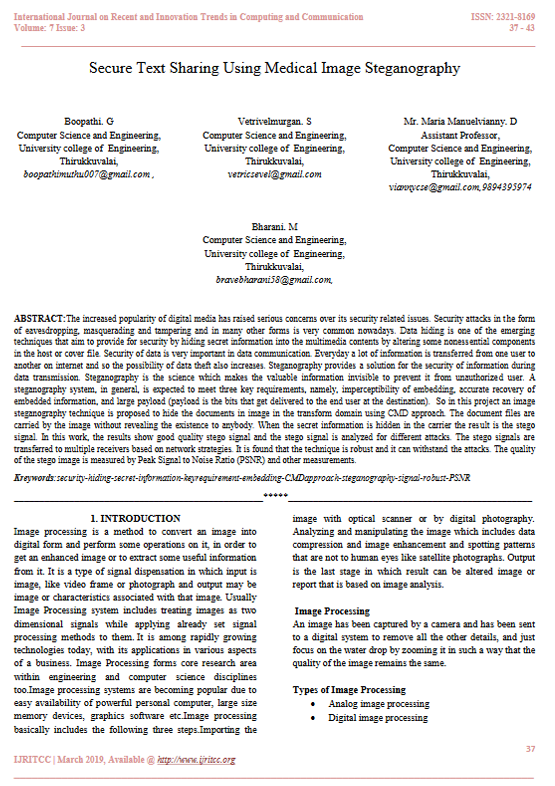Secure Text Sharing Using Medical Image Steganography
Main Article Content
Abstract
The increased popularity of digital media has raised serious concerns over its security related issues. Security attacks in the form of eavesdropping, masquerading and tampering and in many other forms is very common nowadays. Data hiding is one of the emerging techniques that aim to provide for security by hiding secret information into the multimedia contents by altering some nonessential components in the host or cover file. Security of data is very important in data communication. Everyday a lot of information is transferred from one user to another on internet and so the possibility of data theft also increases. Steganography provides a solution for the security of information during data transmission. Steganography is the science which makes the valuable information invisible to prevent it from unauthorized user. A steganography system, in general, is expected to meet three key requirements, namely, imperceptibility of embedding, accurate recovery of embedded information, and large payload (payload is the bits that get delivered to the end user at the destination). So in this project an image steganography technique is proposed to hide the documents in image in the transform domain using CMD approach. The document files are carried by the image without revealing the existence to anybody. When the secret information is hidden in the carrier the result is the stego signal. In this work, the results show good quality stego signal and the stego signal is analyzed for different attacks. The stego signals are transferred to multiple receivers based on network strategies. It is found that the technique is robust and it can withstand the attacks. The quality of the stego image is measured by Peak Signal to Noise Ratio (PSNR) and other measurements.

